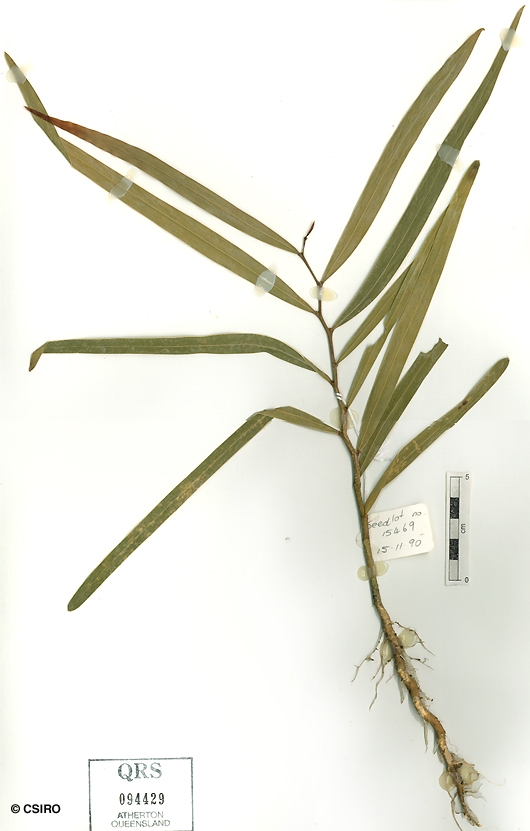Australian Tropical Rainforest Plants - Online edition
Acacia fasciculifera F.Muell. ex Benth.



Bentham, G. (1864) Fl. Austr. 2: 361. Type: Rockhampton, J. Dallachy; lecto: K. Fide Pedley, L.(1979), Austrobaileya 1: 263.
Bark dark, very rough and flaky on larger trees. Inner blaze very fibrous and stringy.
Leaves phyllodineous, penninerved, reticulate, but with thickened vein-like margins. Leaf blades about 5-13 x 0.7-2 cm. A gland usually visible on the edge of the leaf blade slightly above the leaf blade junction. Petiole very short, somewhat swollen and transversely wrinkled.
Inflorescence a condensed raceme of heads, appearing to be an axillary cluster of flowers, the axis appressed pubescent, about 3-8(-14) mm long, bearing about 3-8 sparsely pubescent or glabrous peduncles about 10-15 mm long, sometimes the inflorescence much reduced. Heads about 25-flowered. Calyx lobes free, about 0.7-1 mm long, linear-obtuse. Corolla lobes about 1.5-2 mm long, obovate, uninerved, about as long as the tube. Stamens about 4 mm long. Ovary glabrous.
Cotyledons ovate, about 8-9 mm long. First pair of leaves pinnate. Third leaf usually simple, linear, phyllodineous and penninerved but with a thickened margin. At the tenth leaf stage: leaves +/- erect, about 16-20 cm long, linear, penninerved but the margin thickened and vein-like; midrib raised on both surfaces; stipules small, broadly triangular and persistent. Seed germination time 7 days.
Endemic to Australia, occurs in NEQ, CEQ and southwards as far as the Queensland border. Altitudinal range in NEQ from near sea level to 550 m. Grows in monsoon forest and other dry scrubs like brigalow scrub and on the margins of some of the drier rain forests.





